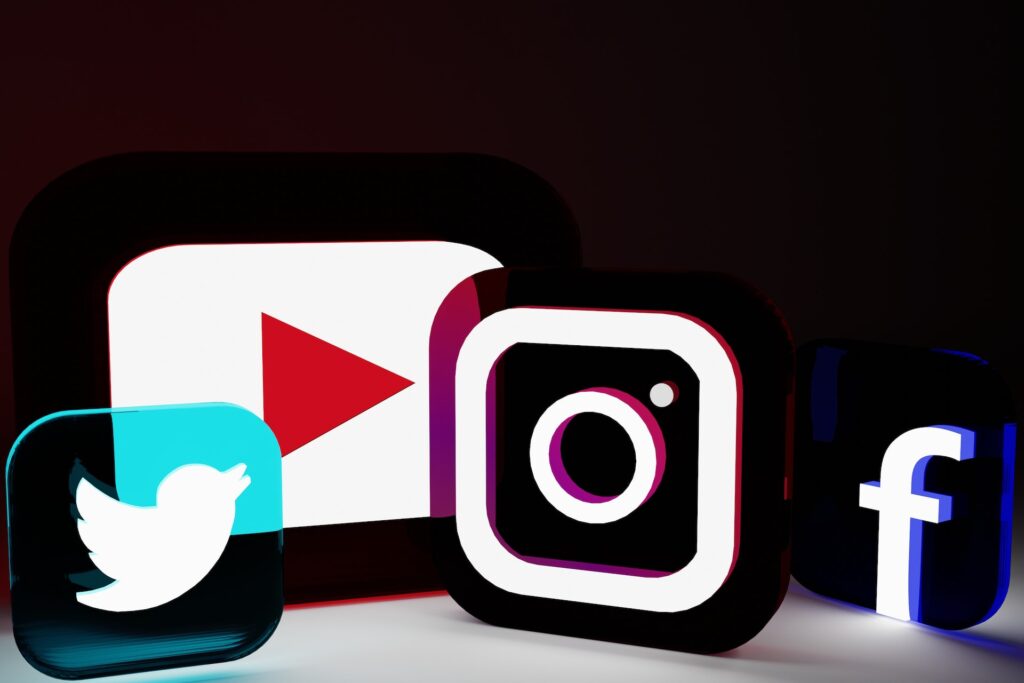Last Updated on March 15, 2024 by Treana Wunsch
This is the 4th and last article in the 4 Ps of Marketing series. In the previous 3 articles, I wrote about Product, Price and Place. This series was inspired by my How to Write an Effective Business Plan series. I wanted to go deeper into each area of marketing. Keep reading to discover how to promote your products and services.
What is promotion?
Promotion is an essential tool for small businesses, allowing them to expand their reach and draw in new customers. Promotion is a combination of activities that help to raise awareness about a company’s product or service and create interest in it. Through promotion, small businesses can make their products or services more visible to potential customers.
There are lots of ways to promote a business’ product or service, from traditional methods such as print advertising and flyers to more modern techniques like social media campaigns and SEO optimization. Knowing how best to promote your business will be key in getting the most out of your efforts and ensuring that you get the word out there effectively. In this article, we look at how to promote your small business product or service, including advice on creating an effective promotional strategy and making use of the right tactics for maximum impact.
Stopping advertising to save money is like stopping your watch to save time.
Henry Ford Tweet
Role of Promotion
Promotion plays an important role in the success of any small business. It is a marketing tactic that increases awareness of products, services, or brands and can help a business reach new customers.
Promotion includes activities such as advertising, public relations, personal selling and sales promotions. Advertising is most commonly used to communicate the benefits of goods and services to potential customers through media outlets like radio, television, print media and digital platforms. Public relations involves building relationships with key stakeholders such as local communities and media personnel to generate positive impressions. Personal selling involves face-to-face interaction between sales reps and potential buyers while sales promotions are tactics used to incentivize consumers with discounts or free offers.
All these tactics must be carefully coordinated in order to achieve maximum benefit for the small business owner looking to increase their customer base.
Forms of Promotion
Promotion is an important part of successfully marketing a small business product or service. It can be overwhelming to decide which form of promotion to use, but with the right information and research, small business owners can determine which type of promotion will be most effective for their particular product or service.
Advertising

Advertising consists of paid media outlets including television commercials, radio ads, newspaper and magazine ads as well as online banner ads. Advertising is a very powerful force in marketing. It can be used to build brand awareness, create new consumer demand and increase market share.
Public Relations

Public relations is all about building relationships with customers through tactics such as press releases and media kits that create awareness for the company’s products or services. Public relations helps to get the company’s name out there so that consumers are aware of it and can take advantage of its products. Giveaways and Special Offers Companies use giveaways and special offers to increase sales.
Personal Selling
Personal selling is one of the most powerful tools a small business can use to promote its product or service. It involves face-to-face interaction between the seller and potential customers, so it’s key for small businesses to make sure their sales representatives are knowledgeable about their products and services. In order to maximize success, there are several important steps that can be taken when setting up a personal selling strategy.
First, it’s important to clearly define your target audience and know who you’re trying to reach with your product or service. This will help you understand what kind of approach and tone should be used when speaking with them. Additionally, you should have a well-developed sales pitch that focuses on how your product or service solves customer problems in an easy and effective way.
Sales Promotion

Sales promotion is one of the most effective ways to promote a small business product or service. This type of marketing strategy can create buzz around a product or service, increase customer interest and ultimately boost sales. With the right strategies and tactics, any small business can effectively market its products or services through sales promotion.
There are several avenues for businesses to explore when using sales promotion as a marketing tool. Discounts and coupons are an excellent way to entice potential customers, while contests and sweepstakes allow businesses to capture the attention of current customers as well as new prospects.
In addition, businesses can offer incentives such as gift cards, rebate programs or loyalty rewards to further engage their audience. Through the use of these tactics, businesses can create an environment where customers feel encouraged to purchase their products or services.
Digital Marketing
I would be remiss if I didn’t cover digital marketing. It includes activities such as content creation on social media platforms like Instagram and Facebook in addition to creating email campaigns for long-term customer engagement. This is the most powerful form of marketing because the message is not only reaching those who have already made a purchase, but it’s also reaching potential customers. People are exposed to this message and can choose to engage with it or ignore it.
I wrote an entire article dedicated to digital marketing for small businesses. Check it out for more detail on the subject.
Factors to Consider for Promotional Strategies
Promoting your small business product or service is key to success, but it’s important to make sure you have the right promotional strategies in place. There are a variety of factors to consider when developing and implementing an effective promotional strategy.
Start by defining what you want your potential customers to learn from your promotion and develop a message that gets them excited about purchasing your product or service. Knowing who your target audience is and what their needs are will also help you create a plan tailored to reach them. Additionally, consider the types of media available for promoting your product or service, such as print advertisements, radio spots, digital campaigns or even word-of-mouth referrals.
It’s important to measure how successful each component of the promotional strategy was so that you can adjust it as needed going forward.
Benefits of Effective Promotion
Promoting a small business’s product or service is essential for success in the modern world. It can be difficult to stand out from the competition, but with effective promotion strategies, businesses can achieve their growth goals. Here are some of the benefits of taking the time to develop an effective promotion plan:
First and foremost, by promoting your products or services effectively, you will be able to reach more potential customers. This means you’ll have a better chance of increasing sales and making your business more profitable. You will also be able to build brand awareness so that potential customers know about your business when they need your service or product. Additionally, effective promotion helps attract new customers through word-of-mouth advertising and referrals from existing clients – both of which can benefit you in the long run.

Don't Miss a Thing!
Get weekly updates on the latest posts and more from me straight to your inbox.
Challenges Faced in Promotion
Promoting a small business product or service can be an intimidating task, especially for those just getting started. There are a few challenges that entrepreneurs must take into consideration when developing their promotional strategies.
One of the most common challenges is budget constraints. Many budding businesses have limited funds to allocate towards marketing, making it difficult to launch comprehensive campaigns that reach large audiences. A lack of resources can also make it difficult to keep up with trends and stay relevant in the industry, both of which are necessary for effective promotion.
Another challenge is competition—large companies often have big budgets that enable them to outspend smaller businesses on popular marketing channels such as search engine advertising or television spots. To compete in these spaces, entrepreneurs must find ways to differentiate their products and services from other offerings while staying true to their unique brand identity.
Cost of promotion
It is no secret that businesses need to promote their products and services in order to get noticed by potential customers. As a small business owner, however, you may be wondering what the cost of promotion for your business is. The cost of promotion can vary greatly depending on the type of product or service you offer and how much time and money you are willing to invest.
When it comes to promoting your small business, there are some free or low-cost options available such as social media marketing and search engine optimization (SEO). Utilizing these methods can help increase visibility without breaking the bank. Additionally, developing relationships with influencers who can speak positively about your brand will also help grow your customer base without spending too much money. But if you want more control over how your product or service is promoted, paid channels like television ads and print publications may be worth investing in.
Promoting your small business product or service is critical for success. But how much should you be spending on promotion? With limited resources, it can be difficult to determine the most effective way to allocate funds.
When considering how to promote your business, there are many factors to take into account. From creating a budget and setting goals, to implementing digital and traditional marketing tactics – the process can seem overwhelming. To ensure you get the most out of your promotional efforts, it’s important that you invest in a strategy that fits within your budget and aligns with your overall business objectives.
Promoting a small business product or service can be costly, but it doesn’t have to break the bank. As the number of small businesses continues to grow, understanding how much money is necessary for successful promotion is key. The average businesses spend on promotion varies depending on factors like budget size and industry type.
For example, a local restaurant may not need to invest much money in digital advertising campaigns, while an e-commerce website would need more of a web presence as part of its promotional strategy. For budgeting purposes, an estimated average for small business promotion ranges from 1-5% of their total revenue. This allocation should cover various marketing efforts such as social media posts, email campaigns, and website optimization.
That's All Folks...
In the wake of a competitive marketplace, promotion is essential for any small business hoping to make its mark. A successful promotional campaign can help bring in new customers and ultimately lead to increased revenue. This article discussed strategies that small businesses can use to promote their product or service, such as leveraging social media, using digital advertising methods like search engine optimization, and creating content that speaks to their target audiences.
Promotion is an integral part of success for any business; it serves as a key component of the marketing mix, which also includes product design and pricing. Promotion helps spread awareness about a specific product or service and makes potential customers aware of its existence. It also allows small businesses to build relationships with their target audience and understand what they need from them in terms of customer service and support.
Thanks for reading!
Was this article helpful?
Did I miss anything?
Have you tried any of these marketing strategies?
What worked and what didn’t?
Comment below!











